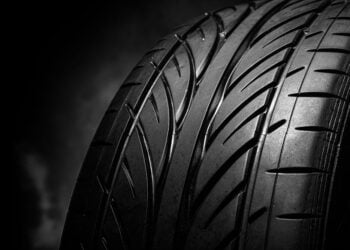The broad field of premises liability encompasses claims that result from an actual or alleged condition on someone else’s property. Generally speaking, the plaintiff must be an invitee onto the premises and the defendant must possess the land or premises. Additionally, there must be some degree of negligence, a breach of the duty of care, or some other wrongful act resulting in a personal injury. Engineers specializing in the areas of safety, human factors, industrial engineering, and accident reconstruction can apply science to better understand the physics of the incident, what may have gone wrong to cause the incident, and if there are codes, standards, guidelines, or industry best practices governing the circumstances of the incident.
Slip and Falls
Perhaps one of the most common types of premises liability claims is the slip and fall. A slip arises from the failure of traction on the interface between footwear or bare feet and the walking surface.
Four common factors that affect footwear or bare-foot traction include:
- The floor surface
- Possible contaminants on the floor surface
- Footwear being worn
- The pedestrian’s gait dynamics
An important part of the engineering analysis of a slip and fall event is to account for the factors that can cause a slip and fall event and determine how they came into play during a particular event. It is also important to understand what entity(s) had control of a particular factor. For example, a facility will have control over what kind of floor surface was chosen for a particular walkway area whereas a pedestrian will have control over their own gait and how they walk across the walkway area.
The Coefficients of Friction
The coefficient of friction (COF) is a scientific value that represents the ratio of the force (F) required to move an object across a surface and the weight (W) of the object being moved across the surface, i.e. COF = F/W. This ratio is a value between 0 and 1, where 0 represents a low coefficient of friction, resulting in a slippery surface, and 1 represents a high coefficient of friction, resulting in a slip-resistant surface.
Tribometrists, ones who study the science of measuring friction between surfaces, and engineers use tribometers to measure the friction between two surfaces and determine the coefficient of friction. Two variations of coefficient of friction are measured. The static coefficient of friction is the ratio of the force required to initiate relative motion between an object and a surface it is in immediate contact with from a resting position and the weight of the object. The dynamic coefficient of friction is the ratio of the force required to keep a sliding object in motion once motion (slipping) has begun and the weight of the object moving. Tribometers can measure either the static COF or the dynamic COF or both. It is important to know which COF is being quantified.
Once the static, dynamic, or both coefficients of friction have been determined for a given floor surface, the engineer can better understand the physics of a slip event and assess how each of the four common factors may have impacted the circumstances of the incident.
The Standards
Additionally, as part of the engineering analysis of the slip and fall, the engineer will use codes, standards, guidelines, or defined industry best practices to understand the meaning of the COF in the context of pedestrian ambulation and how the factors affecting the incident are defined and governed.
Codes are defined as rules and requirements that are codified and mandatory to be followed. Sources such as the Occupational Health and Safety Administration, the International Building Code, state-specific Building Codes, National Fire Protection Association, and the Americans with Disabilities Act specify the need and requirement for anticipated, expected, and foreseeable walkways to be slip resistant.
However, they do not specify a COF value, either static or dynamic, that is an acceptable value to ensure adequate slip resistance.
Standards are similar to codes in that they are written and published by nationally recognized authoritative sources but they are not codified or required by law. Organizations including the American National Standards Institute (ANSI) and ASTM International (American Society for Testing and Materials) develop and publish consensus technical standards regarding the recommendation for slip-resistant walkways.
These standards, however, do not specify a COF value, either static or dynamic, that is an acceptable value to ensure adequate slip resistance. The National Floor Safety Institute (NFSI) has developed and published consensus technical standards in the B101 Series that specify values of COFs, static and dynamic, that are acceptable for pedestrian walkways, as well as bathtubs and surfaces expected to be walked on while barefoot.
Finally, organizations including the National Safety Council have published articles and guidelines regarding pedestrian ambulation and the need to have and maintain sufficiently slip-resistant surfaces.
Other Factors
In premises liability matters, including slip and fall incidents, other factors must be considered including witness testimony and policies and procedures from the subject premises when completing an overall engineering analysis of a particular situation. However, the science and physics behind the coefficients of friction provide a valuable tool in helping to understand the underlaying inherent characteristics of a floor surface and how those characteristics impact a given incident sequence.










